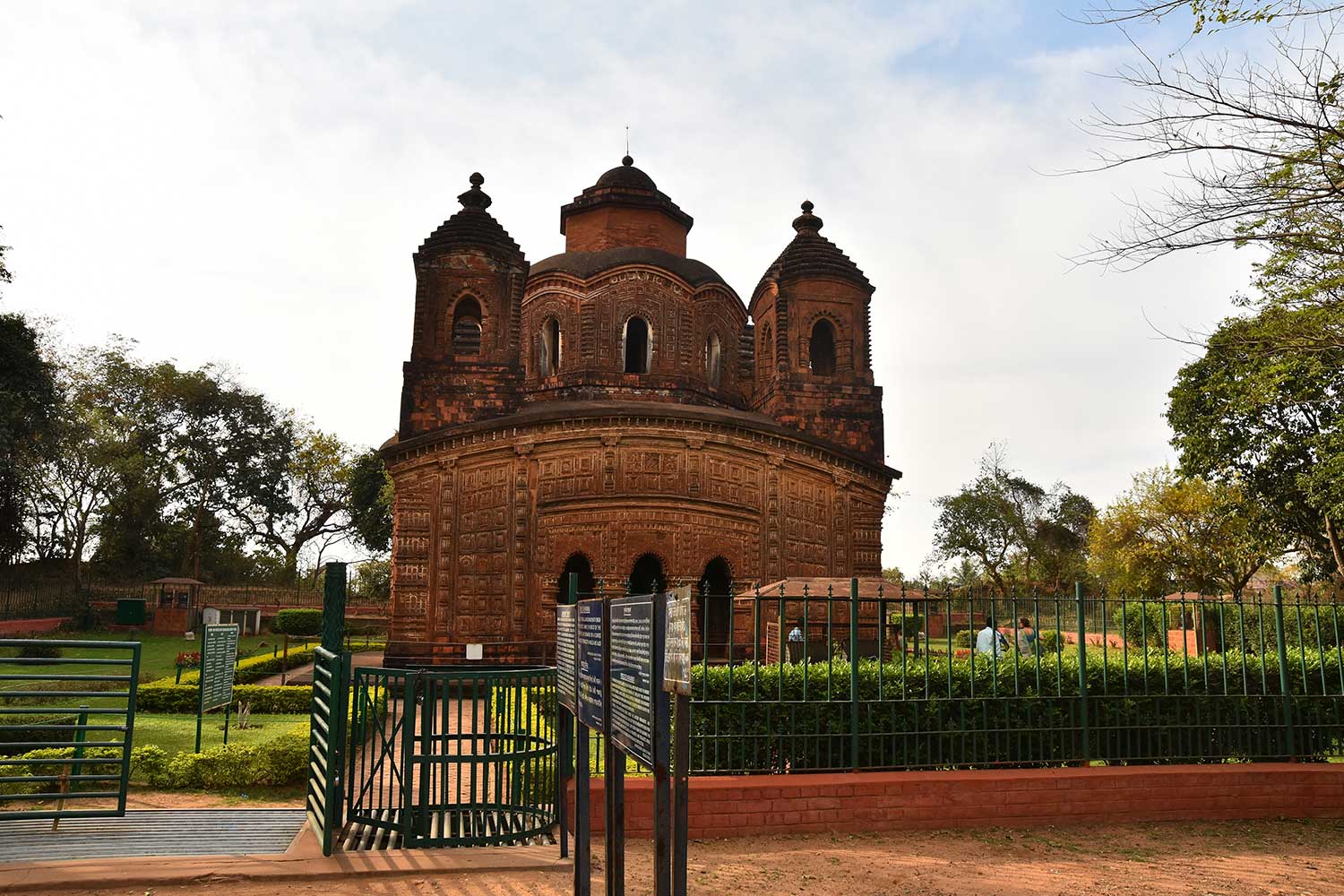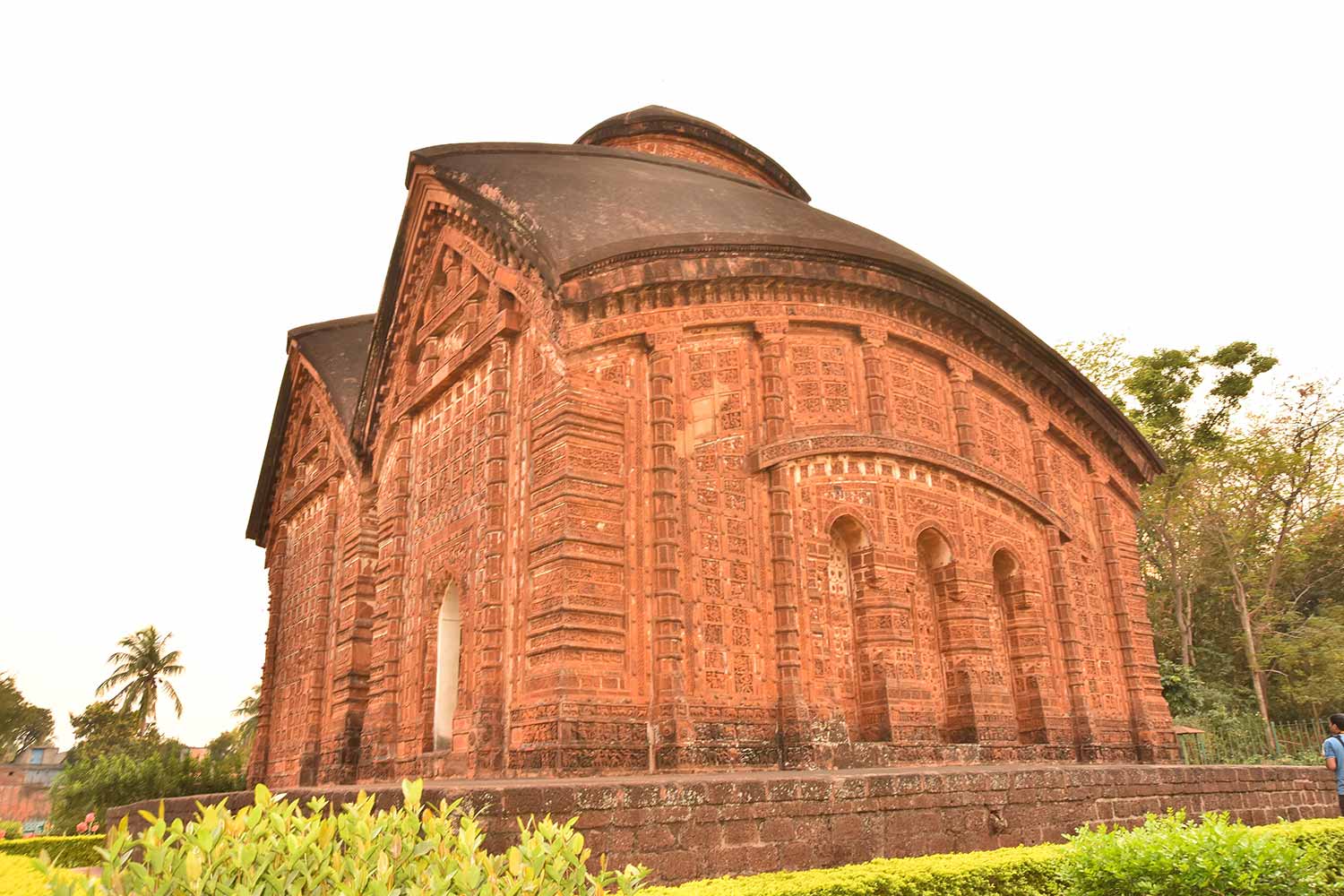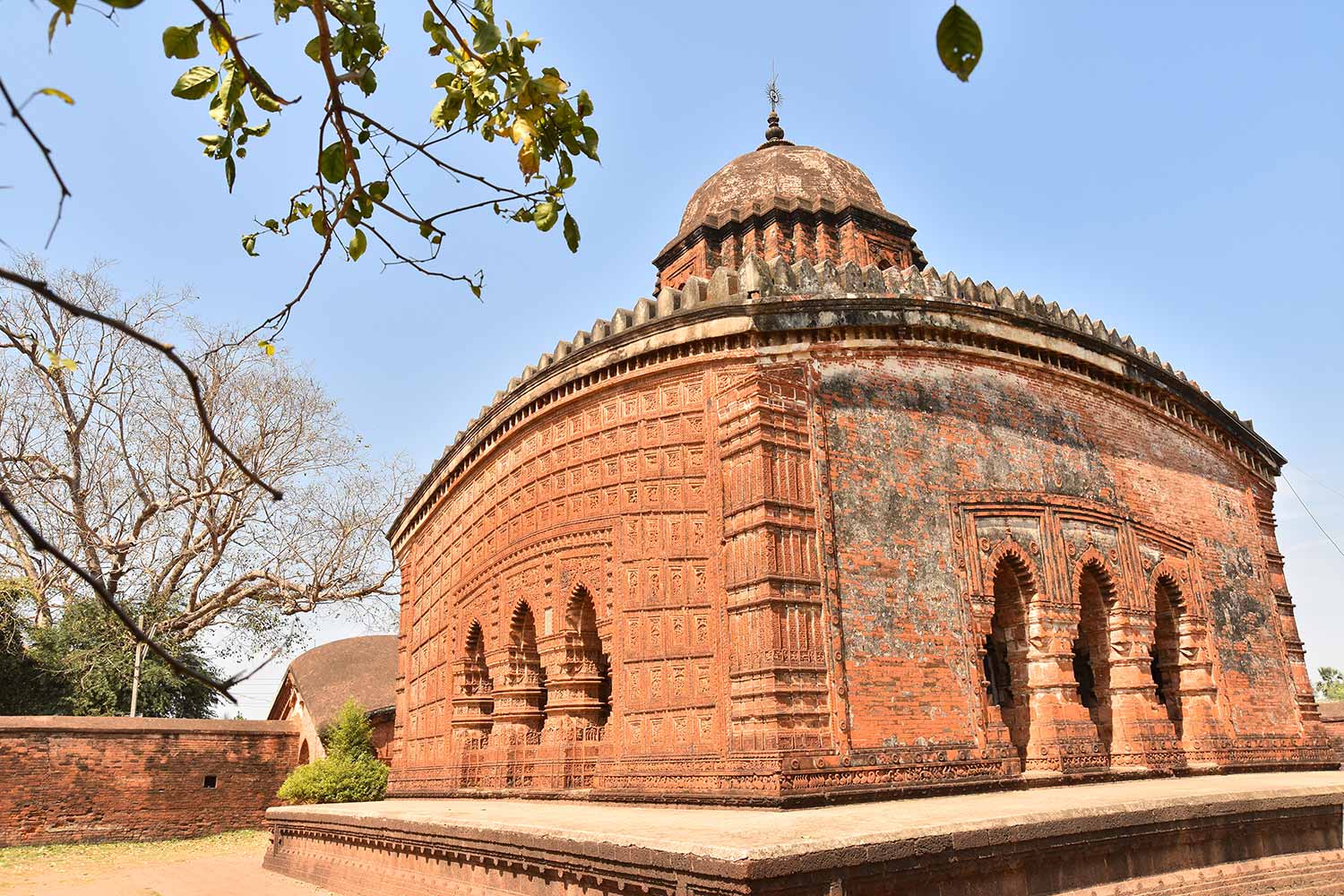- Bishnupur
- College Road, Bishnupur, Post & Dist: Bankura, Pin: 722122

- Bishnupur
- College Road, Bishnupur, Post & Dist: Bankura, Pin: 722122
Contact Numbers
https://annapurnahotel.in/360-view/
![Hotel Annapurna Hotel Annapurna]()


In Bishnupur Rasmancha is a building of highest tourist attraction. This monument, built by Mallabhum king Hambir Malla Dev (aka Bir Hambir) in c. 1600 AD, has its own historical and social importance too. Until recently, this was the place to celebrate Vaishnava Ras festival for entire Bishnupur. During that period, Radha Krishna idols of all the temples of Bishnupur town were brought there to be viewed and worshipped by the citizens. This annual festival was held till 1932.
From architectural point of view this building is unique and is dissimilar to any other temple of Bishnupur. The temple stands on a square platform of size 24.5m X 24.5m built of Laterite blocks. The square foundation is 1.5m high. Above the platform, there is a brick structure of 12.5m high. The roof has a pyramidal summit surrounded by ‘Chala’ type structures. Entire ceiling is supported by 40 pillars and arches on four sides which are decorated with art work of flowers and human figures. The internal chamber of the shrine is enclosed by three consecutive circumambulatory galleries and topped by a colossal pyramidal crown above. For more detail please see ASI notice.

Shyama Rai Temple was built by the Malla king Ragunath Singha (pronunciation: sing-ho) in 1643 AD. The temple is a ‘pancha ratna’ or ‘five towered’ temple that stands on a low laterite platform. The central tower is an octagonal and the other four are square. The base of the temple is a square of size 11.4m X 11.4m, and the height above the platform is 10.7m. It consists of an ambulatory pathway with a porch opened by three arches on the four sides of the temple. The roof of the temple is typical Bengai ‘chala’ type and the walls are decorated with most intricate terracotta arts.
Along with usual forms like flowers, animals etc. the terracotta relief panels depict the scenes from the Ramayana and the Mahabharata including the life of Krishna. For more detail please see ASI notice.

Jor-bangla temple, also called Keshta Rai Temple, has a typical architecture that is found in the southern part of Bengal. The temple was built by Malla King Raghunath Singha (pronunciation: sing-ho) in c.1655. The structure resembles two traditional ‘do-chala’ village huts put together side by side. One of them serves as a porch and the other, which is behind the former, serves as a shrine. The curved roof of this pair of huts is surmounted by a ‘char-chala sikhara’. The base of the temple is a square of size 11.8m X 11.48m, and the
height above the platform is 10.7m. The walls are decorated mostly with terracotta panels describing scenes from the Ramayana and the Mahabharata along with floral and geometrical patterns. In fact, the details are so rich it narrates the whole story visually. For more detail please see ASI notice.

Madanmohan temple was built by Malla king Durjan Singha (pronunciation: sing-ho) in 1695 AD. It is relatively a bigger Eka-Ratna temple compared to other similar temples in Bishnupur and is important too. The temple has a square base of 12.2m X 12.2m and a height of 10.7m above a moderate platform. The roof of the temple is typical Bengali ‘chala’ type surmounted by a single ‘sikhara’ or tower. The temple is mainly built of earthen bricks on a laterite block platform and the frontal facade of the temple is profusely decorated with rich terracotta plaques depicting mythological
stories like ‘Krishna Leela’. Around the innermost sanctuary where the idol is kept, there are covered porches on three sides. Except the rear wall, on each of these three sides there are three arched openings, the main entrance being on the west. For more detail please see ASI notice.
Madanmohan temple is probably the most famous because of the interesting story involving its deity. The original deity was installed in a village in Bengal. The fame of the deity spread far and wide after the personal visit by Chaitanya Mahaprabhu, the famous Vaishnava saint. So the Malla king carried the idol to his capital at Vana-Vishnupur and installed him in a terracotta temple built for that purpose. Legend says that the deity Madanmohan himself defended the Malla king in the battle with the ‘bargi’ or Maratha invaders who attacked Bengal. In 1820, the original temple was destructed due to a massive earthquake. After that the present temple was built.

Kalachand temple was built by Malla king Raghunath Singha (pronunciation: sing-ho) in 1656 A.D on a low platform of laterite blocks. This ‘Eka-Ratna’ or ‘single towered’ temple is made of rust-coloured laterite. The temple has a square base of 11.1m X 11.1m and a height of 9.2 m above the platform. The roof of the temple is typical Bengali ‘chala’ type. There is a circumambulatory corridor around the main shrine. The structure has three arched openings on each of the four sides and a ‘sikhara’ or tower (Ratna) on the curved roof. This is probably the earliest ‘Eka-Ratna’ temple found in Bishnupur.
There is an ‘amlaka’ on the top of the ‘sikhara’. The frontal facade of the temple is decorated with various events of contemporary life as well as mythological stories of ‘Krishna Leela’. For more detail please see ASI notice.

Explore Bankura from the heart of Bishnupur. Hotel Annapurna is the only three star hotel in Bishnupur..[..]
Copyright © 2023 Hotel Annapurna. All rights reserved.

